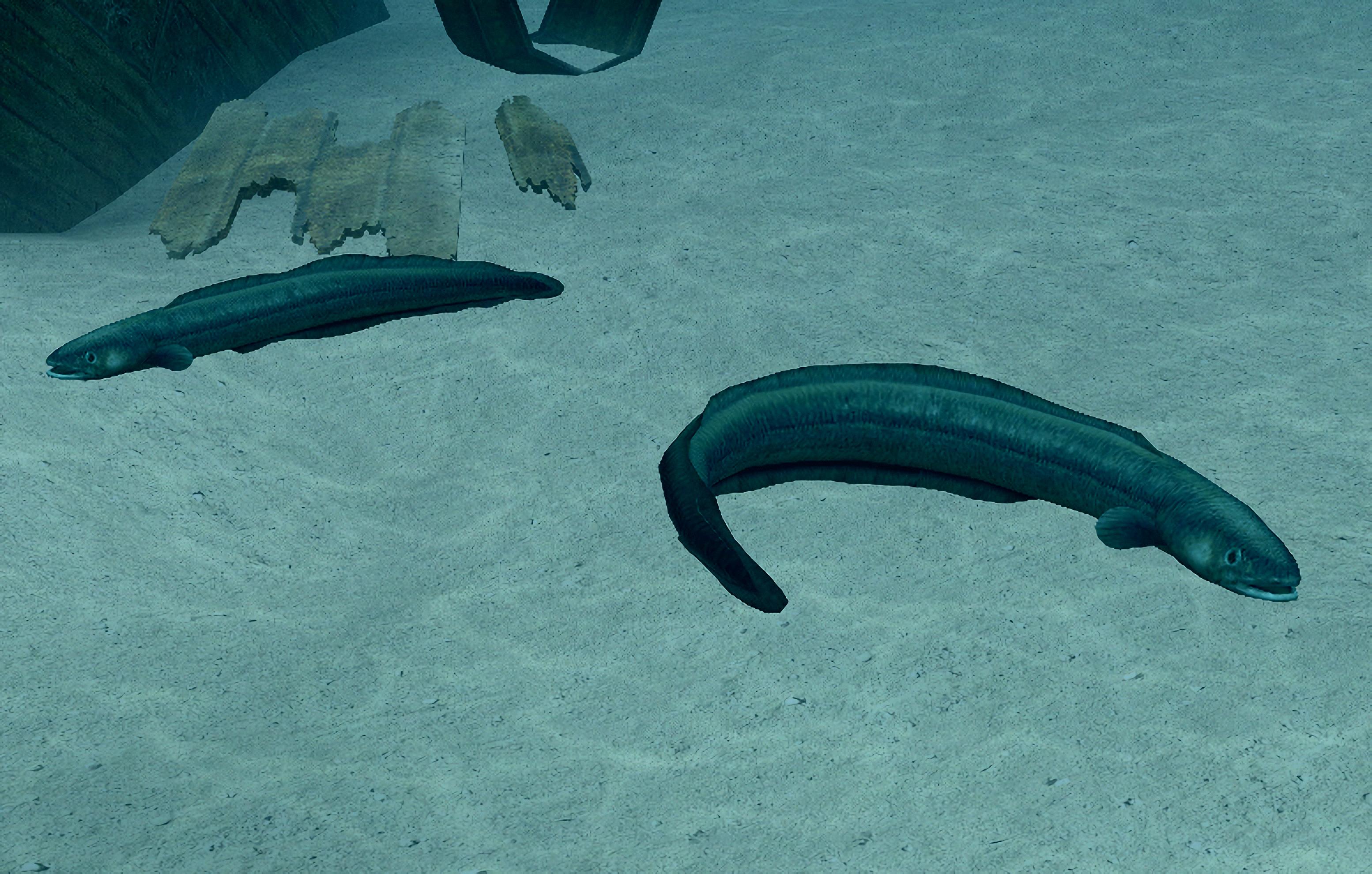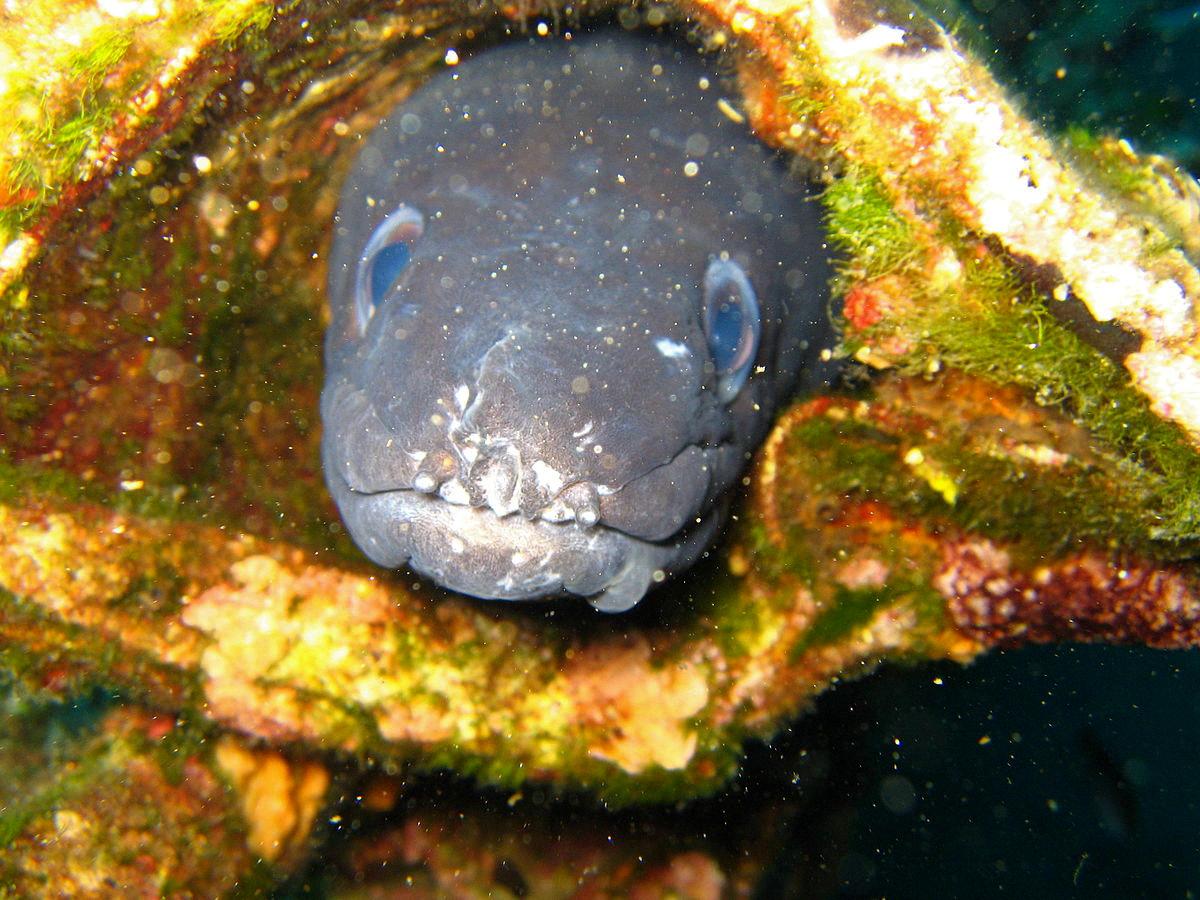The conger eel is a fascinating species of fish found throughout the Atlantic, Indian and West Pacific oceans. They are distinguishable by their large heads, wide mouths, and strong teeth. The upper jaw protrudes furthest on conger eels, whle the lower jaw juts out noticeably on silver eels.
Conger eels are incredibly versatile creatures and can be used in a variety of ways. The tail end is best used for stock due to its bony nature, while the rest can be grilled, pan-fried or casseroled. The firm yet strong flavor of the meat pairs well with bacon, garlic, white or red wine, and smoked paprika. Conger eel is also sometimes used to make Caldeirada – a Portuguese fish stew.
Despite its reputation for being dangerous, attacks from conger eels are exceedingly rare. That said, a recent case of an unprovoked attack on the Irish coast showed that it’s still possible for them to occur.
If you’re looking for an interesting fish to add to your culinary repertoire then look no further than the conger eel! With its versatile nature and delicious flavor it’s sure to become a favorite in no time at all!
The Edibility of Conger Eel
Yes, conger eel is a good choice of seafood to eat. It has a firm, strong flavour that works well with savoury ingredients such as bacon, garlic and smoked paprika. It can be cooked in various ways, such as grilled, pan-fried or casseroled. The tail end of the conger eel is bony and best used for stock, but the rest of the meat is suitable for eating. Conger eels are also sometimes used to make Caldeirada, a Portuguese fish stew.

Source: endlessocean.fandom.com
Can Conger Eels Pose a Threat to Humans?
Yes, conger eels can hurt you. Conger eels are large predatory fish that inhabit the waters of temperate and tropical regions around the world. They can reach lengths of up to 3 meters (10 feet) and weigh up to 45 kg (100 lbs). While it is rare for conger eels to attack humans, thre have been several reported cases of unprovoked attacks. In 2018, a man was attacked by a conger eel off the west coast of Ireland while swimming in shallow water. He received several deep lacerations from the creature’s razor-sharp teeth, requiring hospital treatment. In addition to these potential attacks, conger eel bites can also be painful due to the sheer size and strength of these creatures. As such, it is important to exercise caution when entering waters where they may be present.
Difference Between Conger and Silver Eels
Conger and silver eel are both types of eels, but there are some distinct differences between them. Conger eels have a longer and more slender body, with a dark brown or greenish-brown coloration alog the back and sides, while silver eels are more robust and silvery in color. Additionally, conger eels have an upper jaw that protrudes out further than the lower jaw, while silver eels have a lower jaw that juts out noticeably. In terms of size, conger eels can grow up to two meters in length while silver eels typically reach lengths of three meters or more. Finally, conger eels live in temperate waters while silver eels inhabit tropical seas.
Where Do Conger Eels Live?
Conger eels live in a variety of ocean habitats throughout the world. They are found in the Atlantic, Indian and West Pacific oceans, occupying tropical, subtropical and temperate waters. Unlike many othr eel species, conger eels do not migrate long distances to mate or spawn; they remain in the same habitat to do so. Conger eels have large heads, wide mouths and strong teeth adapted to their environment.
The Dangers of Eating Eel Raw
Eel should never be eaten raw due to its toxic blood, which contains a protein that causes cramping and can be fatal if ingested. Eating eel in any form carries the risk of food poisoning, as the tissue of some species may contain parasites or bacteria that can cause illness. Additionally, eels are a species of fish listed as overfished on the International Union for Conservation of Nature’s red list. For these reasons, it is best to avoid eating eel altogether.
Cooking Conger Eel: The Best Way
The best way to cook conger eel is to start by preheating the oven to 180ºC (350ºF). Then, place the conger eel on a baking dish and season with salt, pepper, lemon juice and lemon slices. Let it marinate for about 20 minutes. Drizzle the fish with 150 ml of olive oil and bake for about 20 minutes. This method will ensure that your conger eel is cooked trough but still tender and juicy. Enjoy!
The Consequences of an Eel Bite
If an eel bites you, it is important to act quickly. Depending on the severity of the bite, you may need to seek medical attention. The most common complication from an eel bite is infection, so it is important to clean and disinfect the wound as soon as possible. If the bite is particulrly deep, stitches may be needed. In rare cases, long-term injury like the loss of a digit or body part may occur.
Are Conger Eels a Rare Species?
No, conger eels are not rare. They are a fairly common and widely distributed species in the NE Atlantic and Mediterranean. Conger eels can be found in depths ranging from 30 to 1000 meters and can grow up to 2 meters in length. They have an elongated body with a long dorsal fin and sharp teeth. These fish feed on a variety of fish, crustaceans, mollusks, and cephalopods. They are important species for commercial fisheries but thir populations have declined due to overfishing and habitat destruction. Conservation measures are being taken to help protect these species so that they can remain abundant for future generations.
Predators of Conger Eels
Conger eels are a common prey item for many large fish, including sharks, tuna, and mackerel. These predators will often hunt in packs to take down the eel, which can reach lengths of up to 6 feet! Additionally, some marine mammals such as seals and sea lions may also target conger eels. Even smaller fish like barracudas and moray eels have been known to feed on conger eels.
Is Catching Eels Legal in the UK?
Yes, it is legal to catch eels in the UK. However, as an endangered species, there are certain regulations in place to protect them. The most common method of catching eels is usig a fixed eel trap. This must be either permanently fixed to a permanent structure, such as a weir trap or partly or wholly fixed permanently in one place, such as an eel rack. It is also important to note that only mature silver eels may be taken from the sea and there are limits on the number of elvers (young eels) you can take from rivers. It is also illegal to use any kind of spearfishing equipment when fishing for eels.
Catching Conger Eel
Yes, you can catch conger eel by using a variety of bait options. Live fish, such as mackerel, pouting and whiting, shuld be hooked through the upper jaw behind the lip for the best results. You can also use freshly killed fish like squid, herring, or pilchards. Alternatively, you can use crabs and lobsters to catch conger eels.
Maximum Size of a Conger Eel
Conger eels can reach an impressive length of up to 1.8 metres (6 feet) when fully grown. They are a large species of fish that are commonly found in all oceans and sometims in deep water. Conger eels have large heads, wide mouths, and strong teeth, and they can be grayish to blackish in color with paler bellies and black-edged fins.

Source: en.wikipedia.org
How Long Can Conger Eels Survive Without Water?
Conger eels can survive out of water for sveral hours, depending on the species. For example, the European conger (Conger conger) has been observed to remain alive for up to 8 hours when removed from its aquatic environment. On the other hand, the American conger (Conger oceanicus) has been found to survive up to 16 hours out of water. In both cases, the eel is able to remain viable due to its ability to store oxygen in its tissues. The ability of a conger eel to survive out of water can be greatly affected by factors such as temperature and humidity. Therefore, it is best that any individual who removes a conger eel from its aquatic environment ensure that it is returned as soon as possible.
The Record for the Biggest Eel Ever Caught
The biggest eel ever caught was a 350 pound European conger that was discovered in fishing nets ouside of Iceland. This massive eel was an incredible sight to behold and set a new record for the largest eel ever caught. The European conger is a species of eel that is found in the Atlantic Ocean, typically near the coasts of Northern Europe. It is known to grow up to 3-4 feet long and can weigh up to 20 pounds. The 350 pound European conger that was caught outside of Iceland is an exceptional example of this species, as it weighed significantly more than other members of its kind. This giant catch has become an iconic symbol of successful fishing trips and serves as an inspiration for anglers everywhere.
Conclusion
Conger eels are a species of eel found in tropical, subtropical, and temperate waters of the Atlantic, Indian and West Pacific oceans. They have large heads, wide mouths and strong teeth, with the upper jaw protruding furthest. Conger eels can be cooked in a variety of ways, such as grilling, pan-frying or casseroling. The tail end is best used for stock while teir firm flavour works well with bacon, garlic, white or red wine and smoked paprika. While conger eel attacks are rare, it is important to be aware that they can occur.












